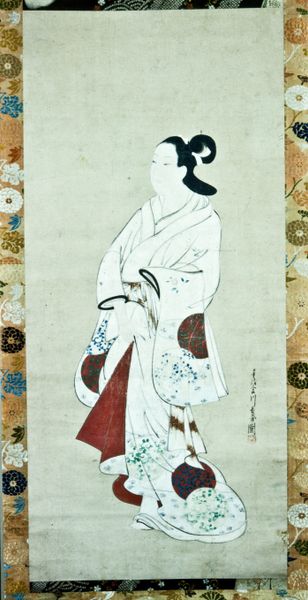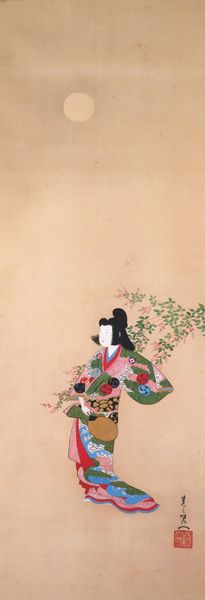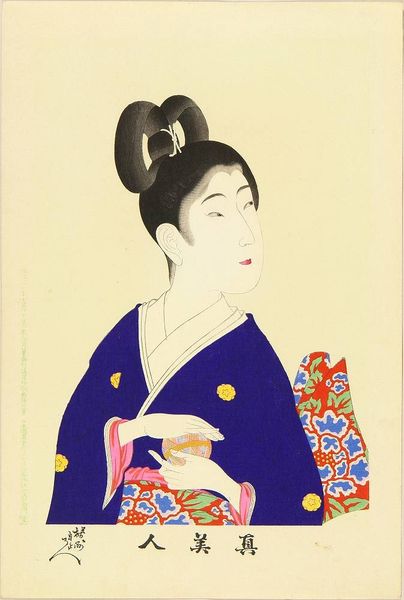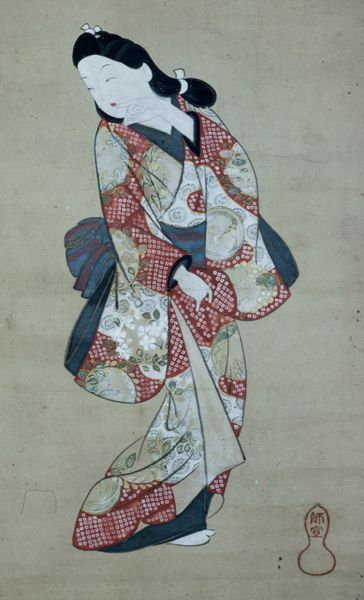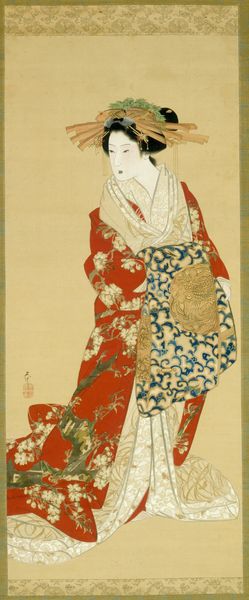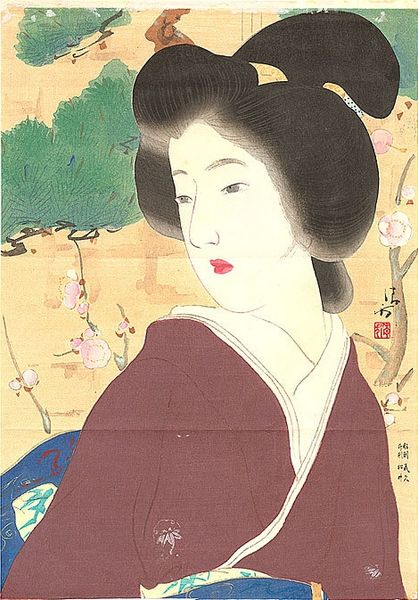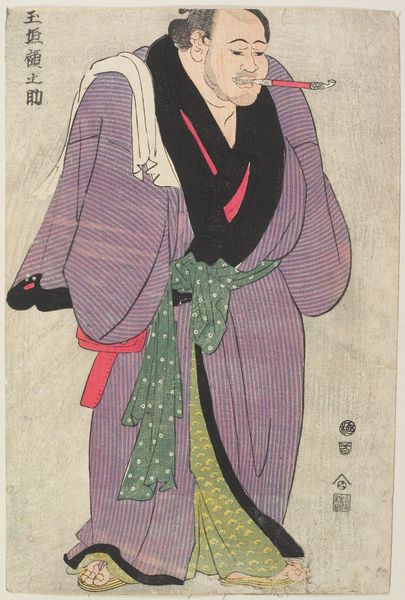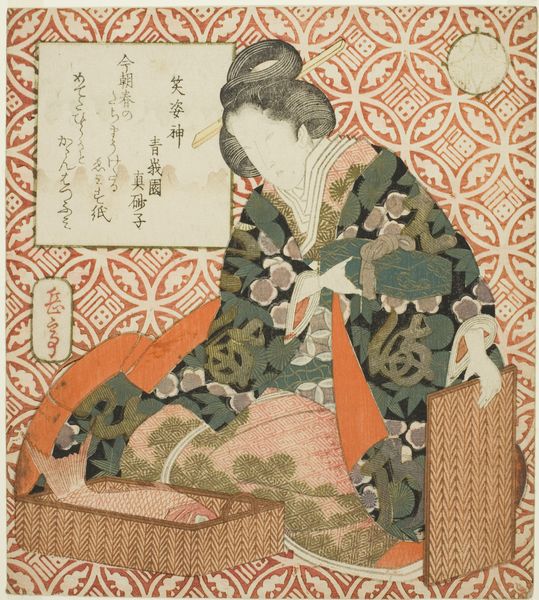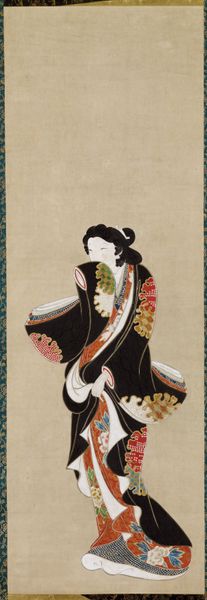
Dimensions: 217 x 113 cm
Copyright: Public domain
Curator: Let’s delve into Uemura Shoen's "Kinuta," created in 1938. We see a woman standing in traditional Japanese clothing. Editor: It's remarkably serene. The pastel palette and delicate rendering create a somber, almost melancholic atmosphere. Curator: That somberness could reflect the socio-political context of 1930s Japan. Shoen often explored the inner lives of women constrained by societal expectations, a subtle critique embedded in her art. The materials themselves are indicative of a careful hand – thin washes of watercolor create such subtle depth. Editor: Yes, it makes me think of the labor involved in producing the pigment. Looking at the surface, there's such dedication. Are the figures represented related to laborers as well, with their practices, tools and modes of fabrication of something we should understand. I agree about the sociopolitical, she may reflect traditional representations of womanhood within increasingly restrictive conditions, mirroring historical constraints through her carefully chosen figures. Curator: Indeed. Shoen, as a female artist in a male-dominated art world, would have keenly understood those constraints. The delicate washes of watercolor, her preferred medium, might even symbolize the fragile position of women at that time. Even how she depicts her face—there's a particular kind of labor in performing a stoic identity like this, you can notice the downcast eyes and stillness in posture, reinforcing a culturally constructed ideal. Editor: It's interesting that you mention the use of watercolor. Considering Shoen's stature as one of the leading painters in the *bijin-ga* style, focusing on beautiful women, one can see the labour behind achieving this simplicity, and that this style, like other types of cultural product, can be disseminated at large scale within society. And she managed this using craft processes. I wonder if it gave her independence too. Curator: Her paintings granted visibility, to her female sitters and to herself as a professional woman and maker in an age when most women in her class could only imagine their value within domestic sphere. Editor: Absolutely. “Kinuta" is beautiful. It allows us to connect how beauty has been materialized over time as a concept but is ultimately always related to material contexts of production, in both image and pigments.
Comments
No comments
Be the first to comment and join the conversation on the ultimate creative platform.
